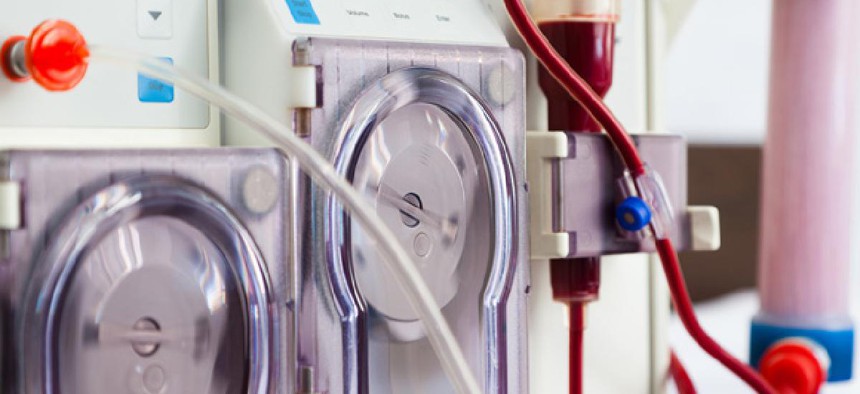Portable dialysis tool sought by military could reduce fatality rate from sepsis

Traditional dialysis machines are not portable. beerkoff / Shutterstock.com
Device could save tens of thousands of lives annually.
The Pentagon’s research arm wants a portable device that uses dialysis techniques to remove toxic substances from the blood of soldiers with infected combat wounds, a solicitation reveals. The envisioned device would reduce casualties from sepsis, a fatal condition where blood gets poisoned by bacteria.
The Defense Advanced Research Projects Agency is seeking proposals to integrate sensors, complex fluid manipulation architectures and separation technologies into a portable device that can treat sepsis across the military health system.
Up to 10 percent of combat wounds end in sepsis, according to a slide presentation describing the program. More than 500 troops suffering combat wounds died of sepsis in 2009, according to the presentation by Dr. Timothy Broderick, the program manager for DARPA’s Microsystems Technology Office. With civilian deaths from sepsis exceeding 200,000 every year, Defense officials estimate such a device could annually save 43,000 lives and $3.3 billion.
(Image via beerkoff /Shutterstock.com)


